第41章 THE DANCING MANIA IN ITALY(4)
Without attributing more to deception and fraud than to the peculiar nature of a progressive mental malady, it may readily be conceived that the cases of this strange disorder now grew more frequent.The celebrated Matthioli, who is worthy of entire confidence, gives his account as an eye-witness.He saw the same extraordinary effects produced by music as Alexandro, for, however tortured with pain, however hopeless of relief the patients appeared, as they lay stretched on the couch of sickness, at the very first sounds of those melodies which made an impression on them--but this was the case only with the tarantellas composed expressly for the purpose--they sprang up as if inspired with new life and spirit, and, unmindful of their disorder, began to move in measured gestures, dancing for hour together without fatigue, until, covered with a kindly perspiration, they felt a salutary degree of lassitude, which relieved them for a time at least, perhaps even for a whole year, from their defection and oppressive feeling of general indisposition.Alexandro's experience of the injurious effects resulting from a sudden cessation of the music was generally confirmed by Matthioli.If the clarinets and drums ceased for a single moment, which, as the most skilful payers were tired out by the patients, could not but happen occasionally, they suffered their limbs to fall listless, again sank exhausted to the ground, and could find no solace but in a renewal of the dance.
On this account care was taken to continue the music until exhaustion was produced; for it was better to pay a few extra musicians, who might relieve each other, than to permit the patient, in the midst of this curative exercise, to relapse into so deplorable a state of suffering.The attack consequent upon the bite of the tarantula, Matthioli describes as varying much in its manner.Some became morbidly exhilarated, so that they remained for a long while without sleep, laughing, dancing, and singing in a state of the greatest excitement.Others, on the contrary, were drowsy.The generality felt nausea and suffered from vomiting, and some had constant tremors.Complete mania was no uncommon occurrence, not to mention the usual dejection of spirits and other subordinate symptoms.
SECT.4--IDIOSYNCRASIES--MUSIC
Unaccountable emotions, strange desires, and morbid sensual irritations of all kinds, were as prevalent as in the St.Vitus's dance and similar great nervous maladies.So late as the sixteenth century patients were seen armed with glittering swords which, during the attack, they brandished with wild gestures, as if they were going to engage in a fencing match.Even women scorned all female delicacy, and, adopting this impassioned demeanour, did the same; and this phenomenon, as well as the excitement which the tarantula dancers felt at the sight of anything with metallic lustre, was quite common up to the period when, in modern times, the disease disappeared.
The abhorrence of certain colours, and the agreeable sensations produced by others, were much more marked among the excitable Italians than was the case in the St.Vitus's dance with the more phlegmatic Germans.Red colours, which the St.Vitus's dancers detested, they generally liked, so that a patient was seldom seen who did not carry a red handkerchief for his gratification, or greedily feast his eyes on any articles of red clothing worn by the bystanders.Some preferred yellow, others black colours, of which an explanation was sought, according to the prevailing notions of the times, in the difference of temperaments.Others, again, were enraptured with green; and eye-witnesses describe this rage for colours as so extraordinary, that they can scarcely find words with which to express their astonishment.No sooner did the patients obtain a sight of the favourite colour than, new as the impression was, they rushed like infuriated animals towards the object, devoured it with their eager looks, kissed and caressed it in every possible way, and gradually resigning themselves to softer sensations, adopted the languishing expression of enamoured lovers, and embraced the handkerchief, or whatever other article it might be, which was presented to them, with the most intense ardour, while the tears streamed from their eyes as if they were completely overwhelmed by the inebriating impression on their senses.
The dancing fits of a certain Capuchin friar in Tarentum excited so much curiosity, that Cardinal Cajetano proceeded to the monastery, that he might see with his own eyes what was going on.
As soon as the monk, who was in the midst of his dance, perceived the spiritual prince clothed in his red garments, he no longer listened to the tarantella of the musicians, but with strange gestures endeavoured to approach the Cardinal, as if he wished to count the very threads of his scarlet robe, and to allay his intense longing by its odour.The interference of the spectators, and his own respect, prevented his touching it, and thus the irritation of his senses not being appeased, he fell into a state of such anguish and disquietude, that he presently sank down in a swoon, from which he did not recover until the Cardinal compassionately gave him his cape.This he immediately seized in the greatest ecstasy, and pressed now to his breast, now to his forehead and cheeks, and then again commenced his dance as if in the frenzy of a love fit.
At the sight of colours which they disliked, patients flew into the most violent rage, and, like the St.Vitus's dancers when they saw red objects, could scarcely be restrained from tearing the clothes of those spectators who raised in them such disagreeable sensations.